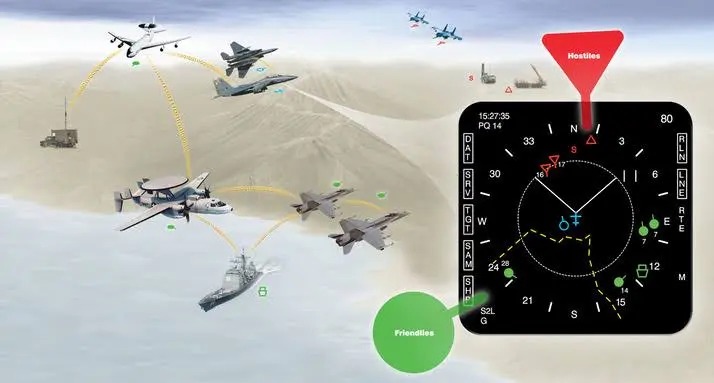Nearly ten months after showing interest in acquiring the US Link 22 advanced battlefield data link system, Taiwan is set to receive its slightly less sophisticated version, the Link 16. The island’s foreign ministry said it received official communication from Washington about the possible sale of the technology for a cost of around $75 million.
The Pentagon’s Defense Security Cooperation Agency (DSCA) said in a statement that “the proposed sale will improve the recipient’s ability to meet current and future threats by enhancing communications and network security and providing infrastructure to allow the secure flow of tactical information.”
This is the first sale of military equipment from the United States to Taiwan under the new Taiwanese government of Lai Ching-te, which won the national elections and the 13th under the President Joe Biden administration.
What Are Data Links?
Data links are digital radio-based systems that interconnect multiple air and ground assets. They share each platform’s view and position and present a tactical battlefield picture. This data includes each other’s position, weapons data, fuel, and possibly the location of nearby PLA forces.
The Link 16 is common across nearly every American and European tactical and strategic fighting platform. These are further linked to surveillance assets like the E-3 Sentry Airborne Early Warning (AEW), RC-135 Rivet Electronic Intelligence (ELINT) aircraft, and RQ-4B Global Hawk strategic surveillance drones.
Why Taiwan Wanted Link 22 & Not Link 16?
In May last year, Lee Shih-Chiang, the head of the Republic of China’s Ministry of National Defense’s (MND) Department of Strategic Planning, made the statement at a meeting of the Legislature’s Foreign Affairs and National Defense Committee.

The Link 16 has its limitations in terms of the vulnerability and integrity of its communications and general obsolescence in features in today’s battlespace, compared to its more advanced variants.
While critical nonetheless, data pertaining only to friendly assets’ location, fuel reserves, and onboard ordnance becomes very limiting in today’s information and situational awareness-centric warfare. This is especially true with technologically advanced peer competitors like Russia and China.
This is also distinct from last century’s Network-Centric Warfare (NCW). The emergence of jets like the J-20, F-35, or Su-57 is a movement towards having inputs from multiple ‘sensors’ (infrared, optical, electronic, and satellite) around the jet and blending them together. It is known in technical terms as ‘sensor fusion’ and ‘data processing.’
The idea is to provide pilots or crews with a discernible picture of the battlefield they do not have to sit and analyze, allowing them to make optimal tactical decisions. The Link 22 or the F-35’s Multifunction Advanced Data Link (MADL) are more suited for this purpose.
The Link 16 also transmits the data in an omnidirectional fashion, spreading everywhere, with the transmission highly vulnerable to being intercepted. But the Link-22 boasts greater anti-jamming capabilities and improves command efficiency while providing faster communications transmissions.
Chieh Chung, an associate research fellow with the National Policy Foundation in Taipei, was quoted saying in May 2023 that Link 22 is a substantial advancement over Link 16. “It greatly strengthens anti-jamming capabilities and improves command efficiency while providing faster communications transmissions,” Chung said.
Link-22 features an automatic grouping function that can fully map out the positions of enemy and friendly forces via a common operational picture (COP), Su said. China’s XS-3 and DTS-03 data links are already superior to Link 16.
The Link 22’s website describes it as “beyond the line of sight (BLOS) communications” and “gap less communication across 1000 nautical miles.” Seven specific NATO member nations are a part of the Link 22 project, including the US, UK, France, Canada, Germany, Italy, and Spain.
Taiwan’s own domestically developed data link system, built by the National Chungshan Institute of Science and Technology (NCIST), is very broadly based on the American Link 16 and meets many of its military’s needs.
Possible US Reasons for Not Selling Link 22
Taiwan receiving the Link-16 is a surprise, given its own officials’ and experts’ evaluation of the Link 22 as being superior and relevant to the island’s military needs before China. This is especially true when Beijing’s advances in electronic warfare (EW) and telecommunications technology have been well noted.
That leaves the question of why Taiwan is being sold a lower version of a defense platform. This can be gleaned from the matter regarding the sale of the MQ-9A Reaper drones to Taipei, which reports in August 2023 claimed would be transferred after removing some of its essential components.

A EurAsian Times analysis noted how the US’s military leadership has long been suspicious of Taiwan’s armed forces, owing to their broad allegiance to the Kuomintang (KMT) party. Rivals of the Communist Party of China (CPC) from the civil war, the KMT has, however, also been reconciliatory with the CPC over the last few decades and has often supported reunification.
Moreover, there are consistent cases of serving and retired Taiwanese military officials being caught for espionage and links to Chinese politicians and businesses. US planners, therefore, have reasonable fears of sensitive military technology falling into Chinese hands.
- The author can be reached at satamp@gmail.com
- Follow EurAsian Times on Google News




